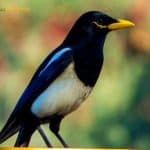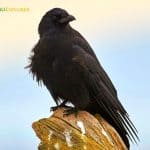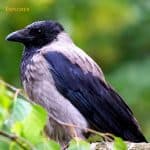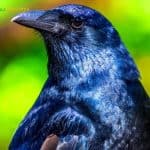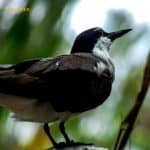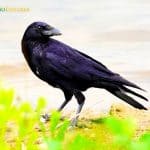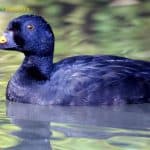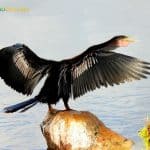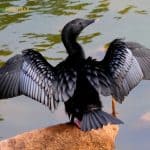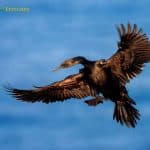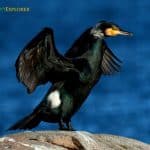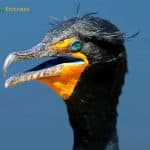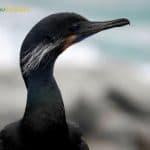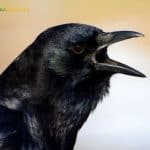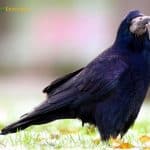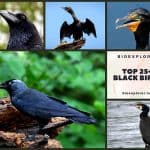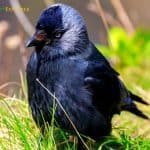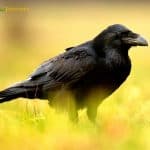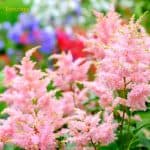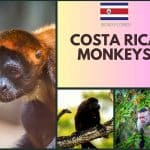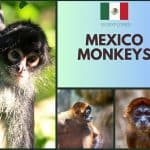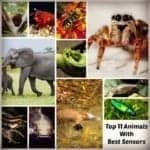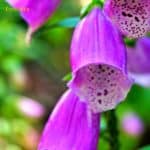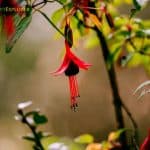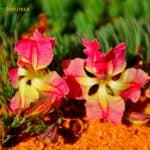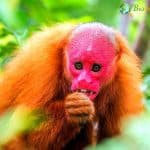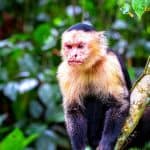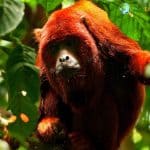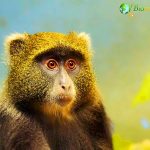types - search results
If you're not happy with the results, please do another search
Top 15 Evolutionary Biology News of 2022
This series of evolutionary biology news of 2022 gives us a detailed overview of the recent development in this field. Commencing with the evolution of plant colonization on land, the new approach of Neo Darwinism gained importance and more.
Explore 13 Different Shapes of Bacteria
The prokaryotic kingdom consists of unicellular microscopic microorganisms called bacteria. Bacteria are simple single-celled organisms that lack chlorophyll pigments. The rigidity of its cell wall determines the shape of a bacterium. Explore 13 different shapes of bacteria here.
Top 15 Botany News of 2022
Botany News of 2022: Explore the latest advancements in plant science, including methane emissions by trees, epigenetic changes, wearable sensors for transpiration detection, and more.
Top 15 Biotechnology News of 2022
The 2022 biotechnological innovations paved the way for stem cell therapies, cannabinoid trichomes' roles in plant defense mechanisms, inventory methods to utilize human waste, the role of quick mRNA vaccines and more.
Top 15 Biochemistry News of 2022
Biochemistry News of 2022: This series of biochemistry news gives us a detailed account of the recent development in this field, including two proteins (Elastase and histone H2A) in defense against COVID-19 and more.
Top 15 Anatomy And Physiology News of 2022
Anatomy/Physiology News of 2022: Discover breakthroughs in organ transplant technology, multi-organ chips, Alzheimer's research, X-ray immunotherapy, astronauts' brain studies, and more.
Top 15 Microbiology News of 2022
Microbiology News of 2022: Plant-based organic acid kills food-poisoning bacteria, bacteria turned into renewable energy, plastic waste creates antibiotic-producing bacteria, microbes as biofertilizers, antibiotics repurposed, and more.
Top 15 Cell Biology News of 2022
This cell biology news of 2022 series gives a detailed overview of the recent advancements (chromosomal segregation machinery, tiny chemical PROTAC targets cMyc and EZH2 in cancer cells and more).
Yellow-billed Magpie
The Yellow-billed Magpie is a striking, large black-and-white bird with shimmering blue-green wings and tail, and a distinctive bright yellow bill and eye ring. Endemic to California’s Central Valley and nearby foothills, it thrives in open oak woodlands, farmlands, and orchards. Highly social, these magpies nest in loose colonies and build dome-shaped nests high in trees. Their varied diet includes insects, acorns, grains, fruit, carrion, and even garbage. Known for their intelligence, they can mimic sounds and sometimes hold "funerals" for dead flockmates. The species is vulnerable due to habitat loss and West Nile virus.
Northwestern Crow
The Northwestern Crow is a mid-sized, all-black bird native to the Pacific coast from southern Alaska to northern Washington. It thrives in coastal habitats, intertidal zones, forest edges, and even urban areas, often foraging on beaches for clams, invertebrates, eggs, and carrion. Known for their intelligence, these crows use tools-dropping clams on rocks to break them open-and perform aerial acrobatics. They are highly social, forming large flocks in winter and engaging in noisy mobbing of predators. Northwestern Crows mate for life, nest in trees or shrubs, and young remain dependent on parents for several weeks.
Hooded Crow
The Hooded Crow is a medium-sized, two-toned corvid with a pale grey body and contrasting black head, wings, tail, and thigh feathers. Found across northern and eastern Europe and parts of the Middle East, it adapts well to woodlands, farmland, coasts, and cities. Hooded Crows are highly intelligent, known for using tools and dropping shells or nuts from heights to crack them open. Their omnivorous diet includes insects, small animals, grains, carrion, and human scraps. Hooded Crows often pair for life, and their harsh "kraa" call is a familiar sound in their range.
Fish Crow
The Fish Crow is a medium-sized, all-black bird with a subtle green-purple sheen, nearly identical in appearance to the American Crow but best distinguished by its nasal "uh-uh" call. Native to the eastern United States, Fish Crows are most often found near water-coasts, rivers, lakes, and marshes-but have expanded inland along river systems. Highly adaptable, they thrive in urban, suburban, and agricultural areas. Omnivorous and opportunistic,
Fish Crows eat everything from carrion and garbage to bird eggs, fruit, and small animals. These black birds often cache surplus food and are known for mobbing predators in groups.
Sooty Tern
The Sooty Tern is a large, striking seabird with black upperparts, white underparts, a white forehead, and a deeply forked tail. Found across tropical oceans worldwide, it spends most of its life at sea, sometimes remaining airborne for 3 to 10 years without landing, as it cannot float due to a lack of waterproofing oil in its feathers. Sooty Terns feed by skimming fish and squid from the ocean’s surface and rarely come to land except to breed in dense colonies on remote islands. Their loud, piercing calls and aerial courtship displays are characteristic of their nesting grounds.
Carrion Crow
The Carrion Crow is a medium-sized, glossy black bird native to Europe and Asia, recognized for its deep, guttural “kraa” call and solitary habits. Adaptable to a wide range of habitats-including woodlands, farmland, moors, coastal cliffs, and urban areas-it often perches in high places to survey its surroundings. Highly intelligent, Carrion Crows use tools, recognize human faces, and even cooperate with each other to hunt or defend territory. Their diet is varied, consisting of carrion, insects, seeds, fruit, and small animals. Offspring from previous years sometimes help parents feed new chicks.
Black Scoter
The Black Scoter is a chunky sea duck, with males easily recognized by their all-black plumage and a distinctive swollen yellow knob at the base of the bill. Females are dark brown with pale cheeks and throat. They breed in remote northern lakes and wetlands, mostly in Alaska and northern Canada, and winter along both Atlantic and Pacific coasts of North America. Black Scoters dive for food, feeding mainly on aquatic insects in freshwater and mollusks like clams and mussels in marine habitats. Black Scoters are monogamous, and their winter flocks can number in the thousands.
Anhinga
The Anhinga, also called the “snake bird” for its long, slender neck, is a large, mostly black water bird with a pointed yellow bill and silvery wing patches. Males have darker, glossy plumage, while females show a paler head and neck. Found in freshwater swamps, lakes, marshes, and slow-moving rivers from the southeastern U.S. to South America, Anhingas are expert divers, swimming underwater with only their head and neck exposed. Unlike most birds, they lack waterproofing oils, so they must spread their wings to dry after diving. Anhingas spear fish with their sharp bills and swallow them headfirst.
Little Cormorant
The Little Cormorant is a compact, all-black waterbird, typically 50–55 cm long, found across the Indian subcontinent and Southeast Asia. In breeding season, adults have glossy black plumage, sometimes with white facial spots and a small crest; in non-breeding season, plumage is browner with a white throat patch. This species thrives in wetlands, lakes, rivers, and estuaries, where it’s often seen diving for fish-its main food. Little Cormorants are highly social, roosting and nesting in colonies, sometimes alongside herons and egrets. After diving, Little Cormorants often perch with wings spread to dry.
Pelagic Cormorant
The Pelagic Cormorant is the smallest and most slender cormorant along the Pacific Coast, recognized by its long, thin neck and all-black plumage, with breeding adults showing white flank patches and short crests on the crown. Found from Alaska to Baja California and the Asian Pacific coast, it inhabits rocky shorelines, bays, and coastal cliffs, rarely venturing far from land. This species dives to depths over 130 feet to catch small fish and invertebrates, often foraging alone. Nests are built on narrow cliff ledges and reused for years.
Great Cormorant
The Great Cormorant is a large, heavyset waterbird with glossy black plumage, a thick neck, and a stout, hooked bill. Adults display a yellow throat patch and, during breeding season, develop white thigh patches and short white plumes on the head and neck. Found across Europe, Asia, Africa, and coastal North America, they inhabit rocky sea coasts, islands, and large inland lakes and rivers. Great Cormorants are expert divers, propelling themselves underwater with their feet to catch fish. After diving, they’re often seen perched with wings spread to dry. They nest in dense colonies, sometimes numbering thousands of pairs.
Double-Crested Cormorant
The Double-Crested Cormorant is a large, black waterbird with a long neck and orange-yellow facial skin. During breeding season, adults display two curly black or white crests on their heads. Found across North America in both freshwater and coastal habitats, they are highly adaptable, nesting in trees, on the ground, or even on artificial structures. These social birds often gather in colonies and are expert divers, feeding mainly on fish but also taking insects, crustaceans, and amphibians. After diving, cormorants are often seen perched with wings outstretched to dry, as their feathers are not fully waterproof.
Brandt’s Cormorant
Brandt’s Cormorant is a large, black seabird found along the Pacific coast from Alaska to Baja California. It is recognized by its thick neck, long body, and, during breeding season, a striking cobalt-blue throat patch and wispy white facial plumes. These dark-feathered birds nest in colonies on rocky islands and coastal cliffs, often building large nests from seaweed and debris. Brandt’s Cormorants are excellent divers, capable of reaching depths over 200 feet to catch fish such as anchovies and herring. These black birds often forage in groups, working together to herd schools of fish for easier hunting.
American Crow
The American Crow is a large, glossy black bird recognized by its distinctive “caw” and confident walk. Common throughout North America, it thrives in a variety of habitats including forests, fields, towns, and cities. These birds are highly social, often living in family groups and gathering in large communal roosts during winter. American Crows are omnivorous and opportunistic, eating insects, seeds, small animals, carrion, and human food scraps. Notably intelligent, they are skilled problem solvers and quick learners. American Crows are curious, cooperative breeders, and adapt well to both urban and rural environments.
Rook
The Rook is a large, sociable black bird native to Europe and Asia, easily recognized by its bare, pale-grey face and cone-shaped head. It forms noisy colonies called rookeries, nesting high in tall trees near farmland, villages, or parks. Rooks forage in flocks, probing fields for grubs, worms, seeds, and grain, but also eat insects, small mammals, and carrion. Highly intelligent, they use tools and have excellent memories. Unlike crows, adult rooks show a whitish patch at the bill’s base. Some rookeries have been used for over a century.
Black Birds
Discover the top 30+ black birds' mesmerizing beauty, unique behaviors, and fascinating facts. Dive into a symphony of wings and feathers as we explore these captivating dark birds shedding light on their mysterious allure.
Eurasian Jackdaw
The Eurasian Jackdaw is a small, social member of the crow family, instantly recognized by its charcoal-black plumage, silvery-gray nape, and striking pale eyes. Native to Europe, western Asia, and North Africa, it thrives in a variety of habitats, from woodlands and farmland to cities and coastal cliffs. Jackdaws are highly gregarious, often seen in flocks performing acrobatic flights or gathering at communal roosts. They nest in cavities, chimneys, or cliffs and are known for their intelligence and curiosity, sometimes collecting shiny objects. Their varied diet includes insects, seeds, fruit, carrion, and even human refuse.
Common Raven
The Common Raven is one of the largest and most widespread black songbirds, easily recognized by its all-black plumage, thick neck, shaggy throat feathers, and wedge-shaped tail. Found across the Northern Hemisphere, it thrives in diverse habitats-from forests and mountains to deserts and coastlines, and even near human settlements. Ravens are highly intelligent, known for problem-solving, tool use, and playful behaviors like aerial acrobatics and object games. They are omnivorous, eating everything from carrion and small animals to grains and human food scraps. Ravens can mimic sounds, including human speech, and often cache food for later use.
Astilbes
Discover the vibrant world of Astilbes, perennial flowering plants that thrive in the shade. Learn about their unique characteristics, astilbe varieties, care tips, and how they can add a touch of elegance and color to your garden.
Costa Rica Monkeys: A Journey into the Rich Biodiversity!
Explore the diverse world of Costa Rica's monkeys in our comprehensive guide. Learn about the four unique species, their habitats, threats, and conservation efforts. Discover tips for monkey spotting during your visit to this biodiversity hotspot.
Mexico Monkeys
Explore the unique world of Mexico's endemic primates, the Mexican Spider Monkey and the Mexican Howler Monkey. Learn about their habitats, behaviors, cultural significance, and conservation efforts to protect these endangered species.
Top 27 Biology-themed Movies
Biology, in the simplest terms, is defined as the study of living organisms. The top 27 biology movies showcase biological concepts and other related scientific fields. Now, who says that you cannot learn while having fun simultaneously?
Top 11 Animals With Super Sensors
While it is known that humans have developed brains, here are 10 animals with the best sensors (seeing, smelling, hearing, tasting, and feeling) and the corresponding anatomical structures that allow them to have so.
Wild Foxglove
Ceratotheca triloba is an annual plant that belongs to the family Pedaliaceae. They can grow to a height of 1.5 to 2 meters. Ceratotheca triloba is the only species of the genus Ceratothica that is found in South Africa.
Qantuta
Cantua buxifolia is an evergreen shrub of the order Ericales. This plant can grow to a height of 13 feet and is a native of the high valleys of the Yungas and Andes mountains in western South America.
Wreath Lechenaultia
Lechenaultia macrantha is a small herbaceous plant from the Goodeniaceae family. It usually grows 150 mm or less. The Wreath Lechenaulta flowers, when viewed from above, show an attractive wreath-like form.
Top 15 Immunology News of 2021
The 2021 discoveries in Immunology showcase the recent developments and their relevance during the upsurge of COVID-19 cases. This treatise describes the development of immunology as a scientific discipline focused on its foundation. Let us glance at these 2021 research outcomes from a broader perspective.
Frugivorous Monkeys
Frugivore monkeys thrive mostly on raw fruits or succulent fruit-like produce of plants such as roots, shoots, nuts, and seeds. About 7 monkey species and 1 ape within the primate order consume fruit as their primary diet. Frugivores are highly reliant on the abundance and nutritional composition of fruits.
Omnivorous Monkeys
Omnivore monkeys have the ability to feed and survive on plant and animal matter. These monkeys obtain energy and nutrients by extracting carbohydrates, protein, fat, and fiber from these organic matters. These monkeys are the largest number of species (216 monkey types) by population within the omnivorous diet category.
Herbivorous Monkeys
Herbivorous monkeys dine solely on plant matters, including leaves, fruits, stems, nuts, and flowers. Here is the full listing of all herbivore Old-world and New-world monkeys (133 kinds of monkeys), including Bolivian Red Howler, Atlantic Titi, Javan Surili, Mount Kilimanjaro Guereza, and more.
Carnivorous Monkeys
Carnivorous monkeys strictly dine on animal matters, including birds, insects, other monkey species, and small mammals. Explore all carnivore monkeys here.
Green Monkeys
Green Monkeys are available in different fur/skin colors. Explore all types of green monkeys, including Hamlyn’s Monkey, Olive Baboon, Malbrouck, and more.
Top Biotechnology News of 2021
These 2021 biotechnological events provide us with a thorough understanding of our most recent developments in the fields of Synthetic Biology, Stem cell and Tissue engineering research, Genome editing and decoding the entire human transcriptomics, Construction of cell-free vaccine, and various other wonders.
Top 15 Botany News of 2021
Top botany news of 2021 give us a deep insight into our latest advancement in botany and plant science related to the evolutionary aspect, conservation of endemic species, global warming, and the mechanism to fight against them.
Top 15 Cell Biology News of 2021
This news series in cell biology 2021 gives us a detailed overview of the recent advancements. Let's explore the top 15 cell biology news of 2021.
Top 15 Ecology News of 2021
This series of 2021 ecology news gives us a detailed overview of the recent development in this field. Commencing with climate change, global warming, alternative ways for renewable energy resources, the role played by scavengers in our society, and other global aspects of management and nature-dependent climate solutions.
Monkeys Starting with Z
Explore all monkeys from the world of primates that start with the letter Z, including Zanzibar Red Colobus, and more.
Monkeys Starting with Y
Explore all monkeys from the world of primates that start with the letter Y, including Yucatan Black Howler, Yellow Baboon, and more.
Monkeys Starting with W
Explore all monkeys from the world of primates that start with the letter W, including Wolf’s Mona Monkey, White-headed Langur, West Javan Langur, White-bellied Spider Monkey, and more.
Monkeys Starting with V
Explore all monkeys from the world of primates that start with the letter V, including Vervet Monkey, Vanzolini’s Bald-faced Saki, Variegated Spider Monkey, Vieira’s Titi, and more.
Monkeys Starting with U
Explore all monkeys from the world of primates that start with the letter U, including Ulindi River Red Colobus, Udzungwa Red Colobus, Ursine Colobus, Urubamba Brown Titi, and more.
Monkeys Starting with T
Explore all monkeys from the world of primates that start with the letter T, including the Tibetan Macaque, Tufted Gray Langur, Tonkean Macaque, Tana River Red Colobus, and more.
Monkeys Starting with S
Explore all monkeys from the world of primates that start with the letter S, including the Siberut Macaque, Santarem Marmoset, Spix’s Red-handed Howler, Siberut Langur, and more.
Monkeys Starting with R
Explore all monkeys from the world of primates that start with the letter R, including Rio Mayo Titi, Red-mantled Saddle-Back Tamarin, Red-bellied Titi, Rondon’s Marmoset, Rhesus Macaque, and more.
Monkeys Starting with P
Explore all monkeys from the world of primates that start with the letter P, including Prince Bernhard’s Titi, Peruvian Yellow-tailed Woolly Monkey, Parecis Titi, Panamanian Night Monkey, and more.
Monkeys Starting with O
Explore all monkeys from the world of primates that start with the letter O, including Ornate Titi, Oustalet’s Red Colobus, Olive Colobus, Olive Baboon, and more.
Monkeys Starting with N
Explore all monkeys from the world of primates that start with the letter N, including Neblina Uakari, Nancy Ma’s Night Monkey, Niger Delta Red Colobus, Northern Muriqui, and more.
Monkeys Starting with M
Explore all monkeys from the world of primates that start with the letter M, including Munduruku Marmoset, Milton’s Titi, Mount Kilimanjaro Guereza, Miss Waldron’s Red Colobus, and more.
Monkeys Starting with L
Explore all monkeys from the world of primates that start with the letter L, including Lucifer Titi, Lake Baptista Titi, Lomami Red Colobus, Laotian Langur, and more.
Monkeys Starting with K
Explore all monkeys from the world of primates that start with the letter K, including Kaapori Capuchin, King Colobus, Kashmir Gray Langur, Kinda Baboon, and more.
Monkeys Starting with J
Explore all monkeys from the world of primates that start with the letter J, including Javan Surili, Japanese Macaque and more.
Monkeys Starting with I
Explore all monkeys from the world of primates that start with the letter I, including Isabel’s Saki, Illiger’s Saddle-Back Tamarin, Indochinese Black Langur, and more.










